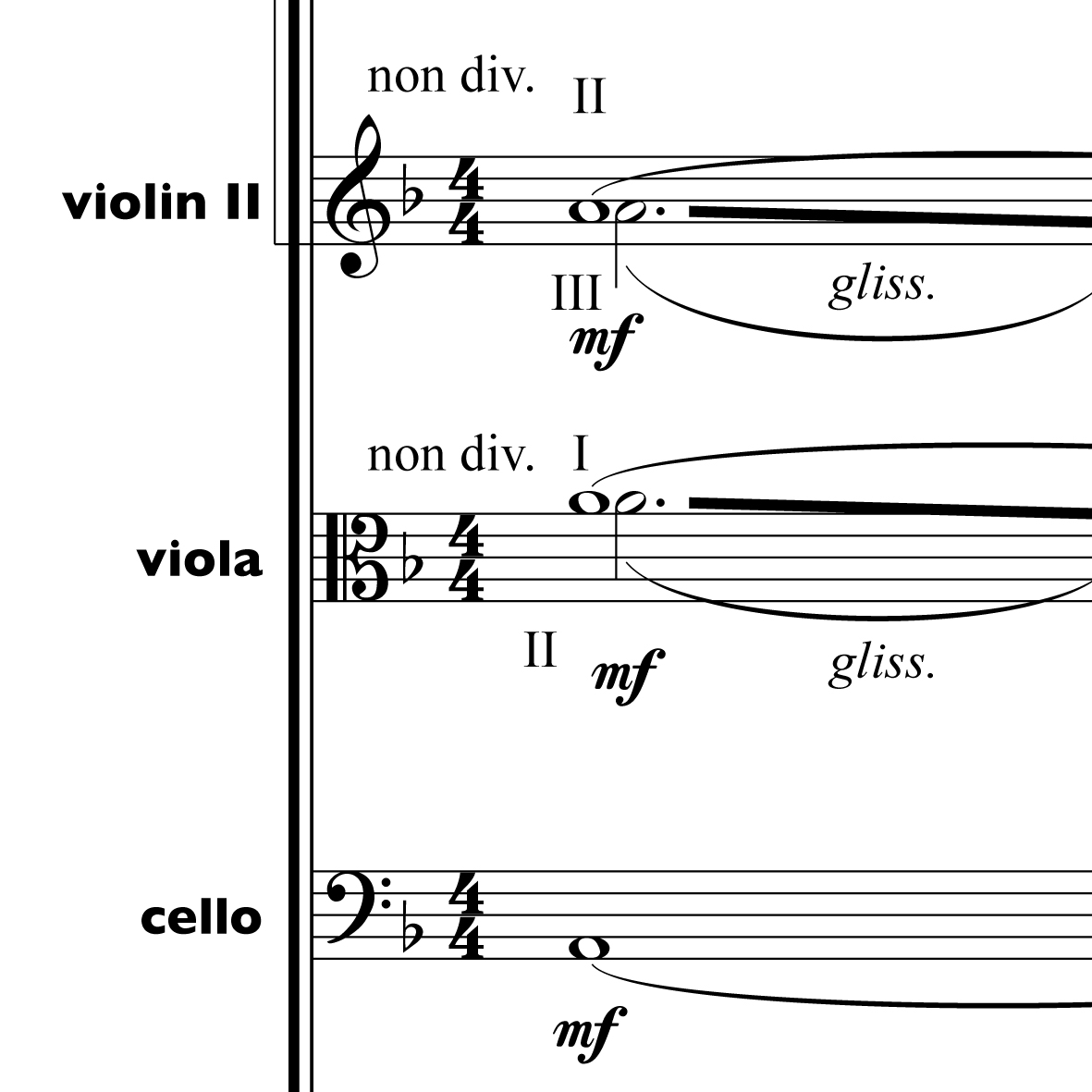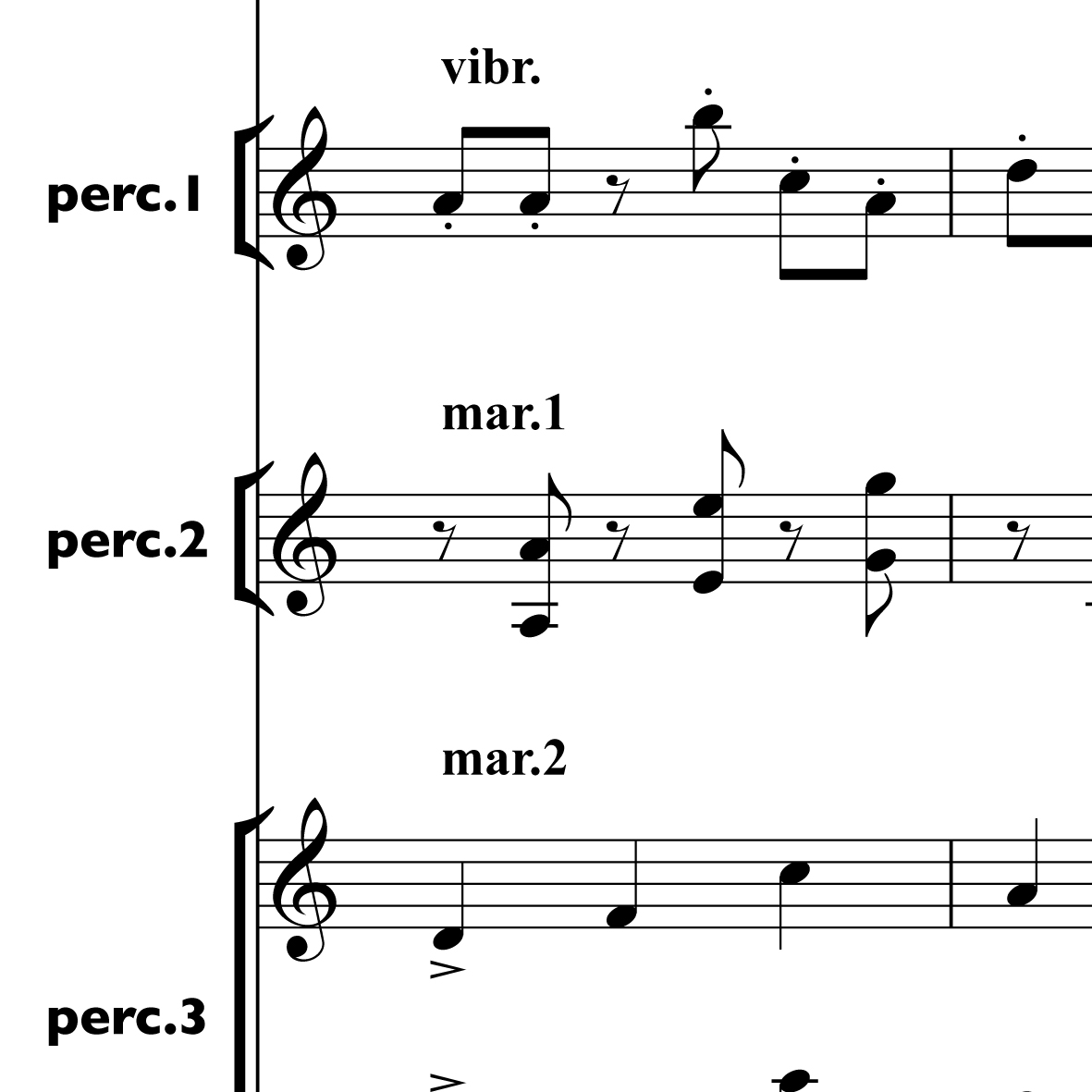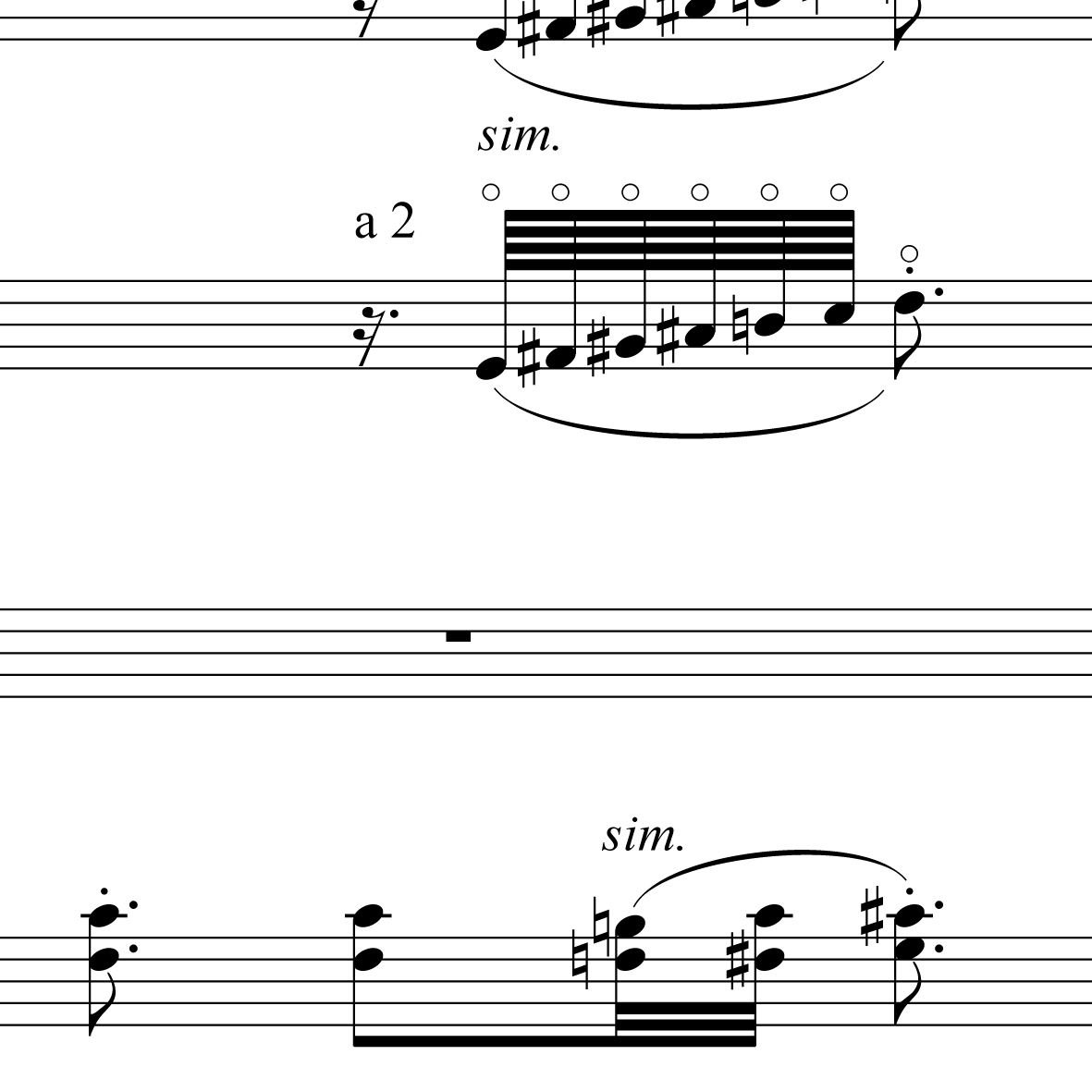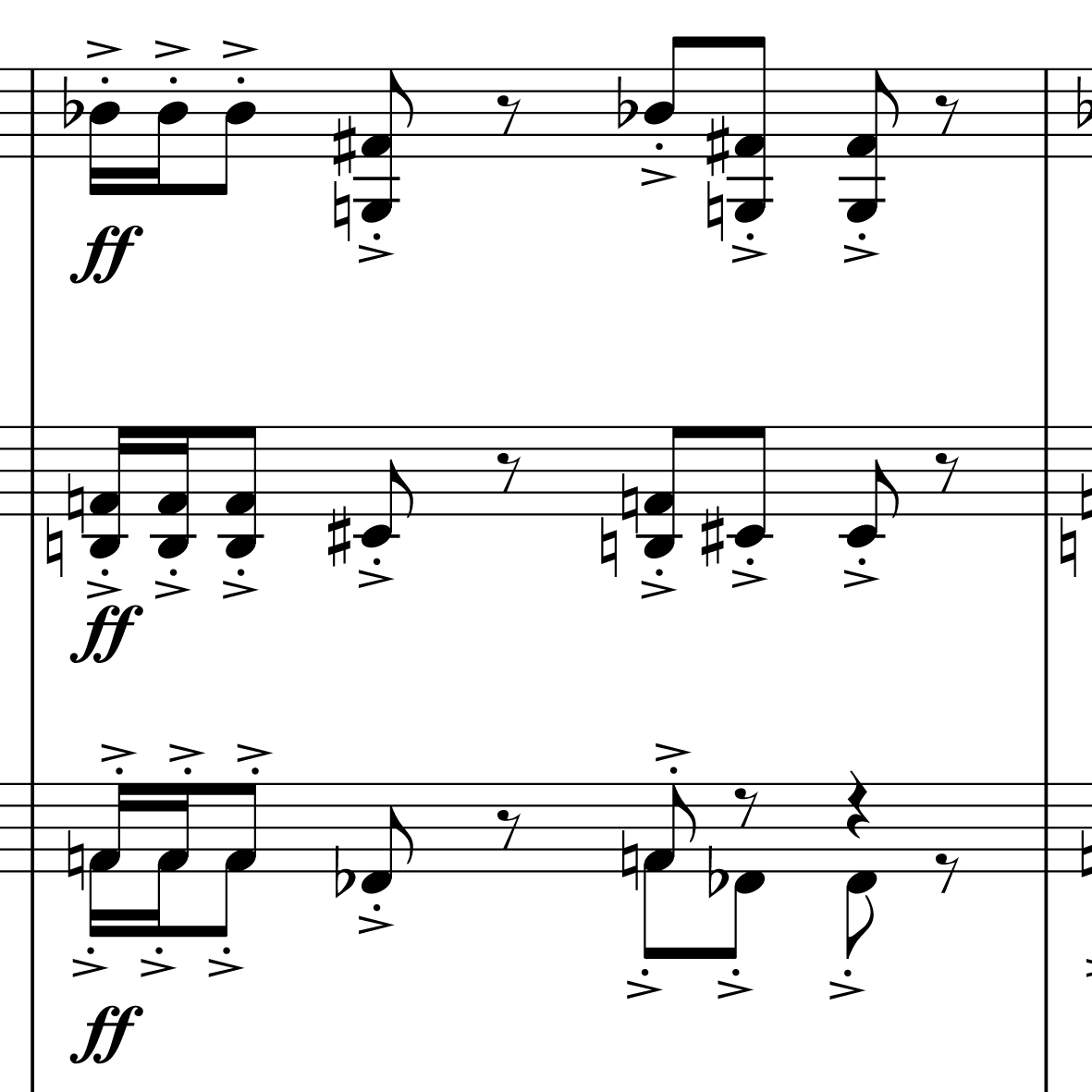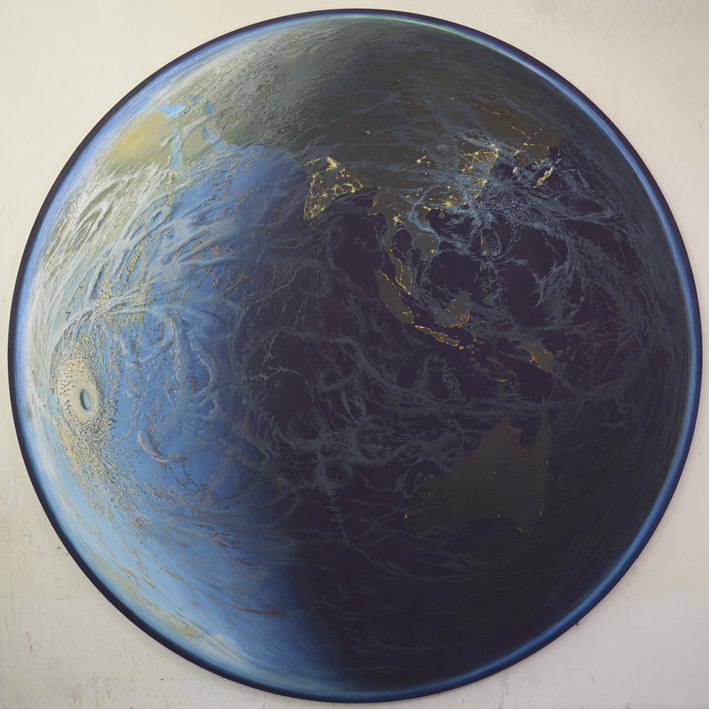Afrique

for percussion sextet & symphony orchestra (2020-2021)
25 minutes | no.64
Afrique is the fifth part of Grand Atlas, a cycle in which each of the seven world continents is depicted in an orchestral composition.
Our clockwise journey begins in North Africa, more precisely, the heart of Egypt.
On our way to the historic monuments, temples and tombs near Karnak and Luxor, we hear snatches of native music coming from afar.
Approaching the village of El-Tod, we clearly distinguish the characteristic sound of the mizmar, an extremely loud double-reed woodwind instrument.
It’s a sort of Arabic oboe, which, due to its trumpet-like bell, easily manages the kind of volume we normally expect from brass.
Two players improvise in a quasi-unison manner, whilst a third persists in sustaining what seems to be a never-ending, piercing, yet seducing drone.
Traditional drums, such as darbuka, duff and duhulla provide a stirring accompaniment.
We descend by boat down the Nile, all the way to Lake Victoria in Uganda, East Africa.
The hospitable locals of Nakibembe, a small village in Busoga, treat us to an evening of their indigenous music.
The central instrument is the embaire, a xylophone about 2.5 metres long, played by six people, seated three on each side.
It has gigantic keys made from ensambiya wood, and is placed on a huge hole in the ground for resonance purposes.
The music is lively and cheerful, with untrained voices singing along every now and then.
Our travels continue via the east coast, in the direction of Southern Africa, to Botswana, where we meet the Balete people.
In these regions, the focus is not so much on percussion.
Instead, the locals play reed flutes, so-called ditlhaka, and they tend to gather in ensembles that incorporate dozens of participants, performing traditional dances, which can last for hours.
The common practice is for men to play a variety of different-sized flutes, while dancing counter-clockwise in a circle, surrounded by women and young girls clapping.
Travelling back north via the west coast, to Central Africa, we cross the rainforest of Cameroon, home of the Baka people.
Their music is mainly vocal, displaying a striking polyphonic sophistication.
Based on repetitive melodic fragments, with little variation, but lots of improvisation, they dance, sing and yodel as part of healing rituals, initiation rituals, funerals, but also for sheer entertainment.
Our voyage ends in Senegal, West Africa, where the Wolof people preserve the Sabar drumming tradition.
Among its most renowned pioneers was maestro Doudou N'Diaye Rose (1930-2015), and it is in his memory we finish with an orchestral remix of his legendary and utterly exhilarating “Rose Rhythm”.
1. Egypt
Interlude 1
2. Uganda
Interlude 2
3. Botswana
4. Cameroon
5. Senegal
Scoring
percussion sextet
2.2.2.bcl.2-4.2.3.1-timp-perc(1)-str(12.12.10.8.6)
commissioned by & written for
Slagwerk Den Haag & Residentie Orchestra
dedicated to
Justin Billinger
première
13 November 2021
Dag in de Branding
Amare, The Hague (Netherlands)
Slagwerk Den Haag
Residentie Orchestra
Antony Hermus (conductor)
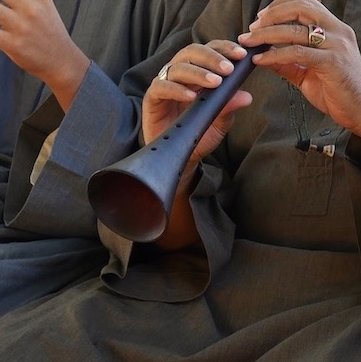
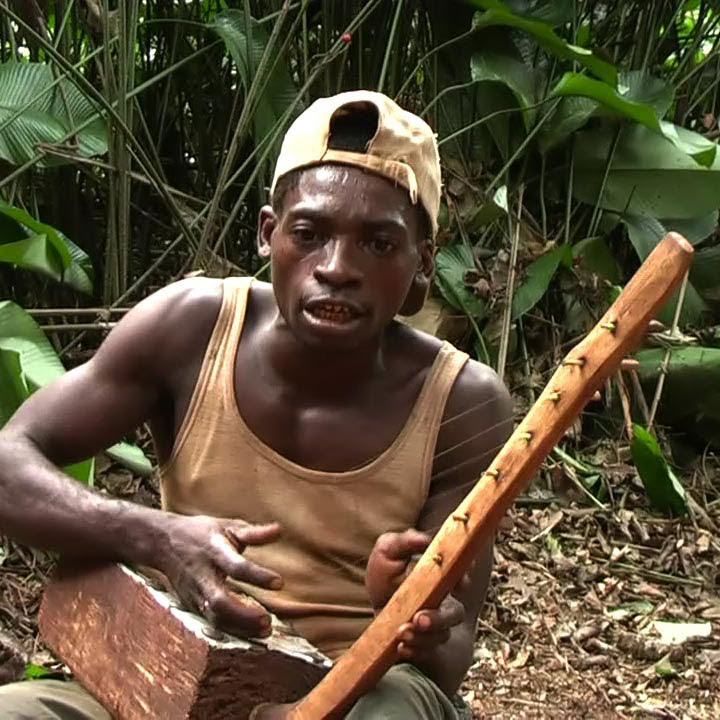
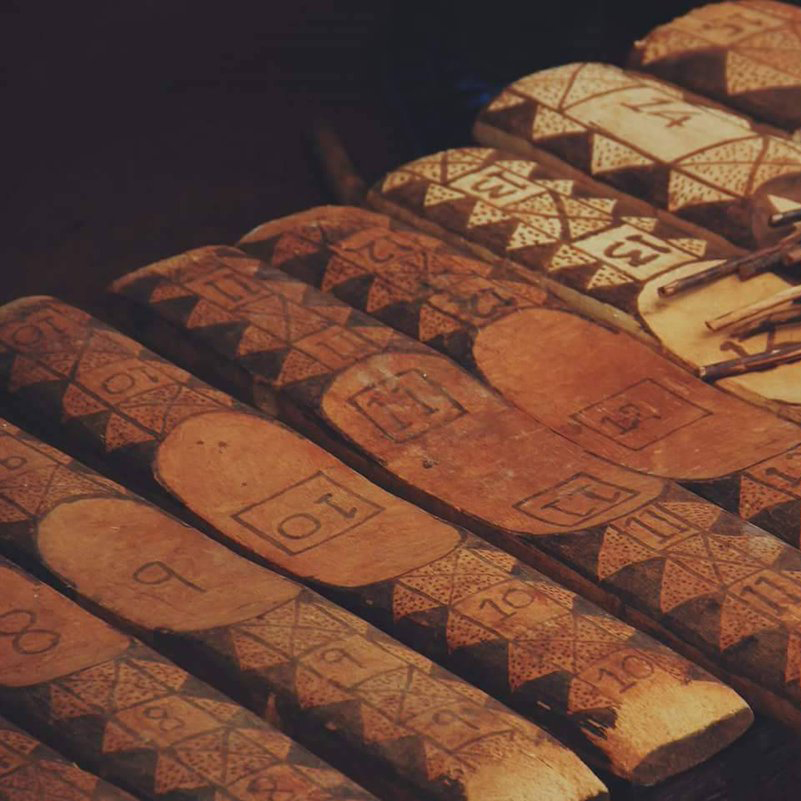
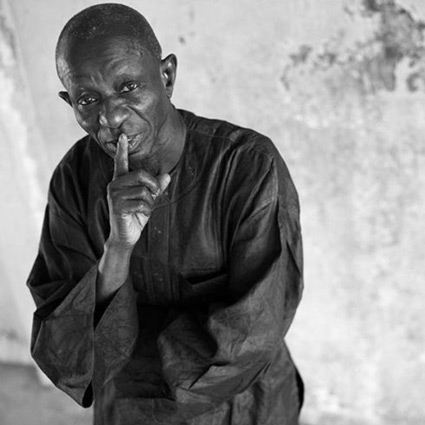
Press
[...] In Afrique, Rijnvos runs off with typical instrumental sounds from Egypt, Uganda, Botswana, Cameroon and Senegal. Due to the enormous concentration on rhythmic processes, Afrique is, of all the components in Grand Atlas, by far the most exciting, and probably also the most immediately accessible. The second movement, Uganda, has an infectious groove, and the third, Botswana, bears a certain resemblance to the work of Steve Reich, with its swelling orchestral chords under a minimalist fabric [...]. The performance aroused great enthusiasm among the audience.
Erik Voermans, Het Parool, 15 November 2021
[...] During the evening, the Festival [in de Branding] was met with a thunderous finale in Amare. [...] After a gigantic stage change, during which the front was stuffed with percussion instruments, the roof got raised with the world premiere of Richard Rijnvos' Afrique for orchestra and percussion group, with a starring role for Slagwerk Den Haag. The work is part of Rijnvos' cycle Grand Atlas, in which he embarks on a musical voyage around the world. [...] The journey started with buzzing orchestral bangs and lamenting melodic drones (Egypt), after which the percussion sextet replicated an enormous marimba with layered rhythms (Uganda). The next passage featured a giant pan flute cut up in six pieces (Botswana); in Cameroon there was a cheerful djembe battle. The journey ended in Senegal, with a grooving orchestral cover of Rose Rhythm by Doudou N'Diaye Rose. The ovation afterwards was utterly justified.[...]
Joep Stapel, NRC, 15 November 2021
Audio Fragments
Performance
Slagwerk Den Haag
Residentie Orchestra
Antony Hermus - conductor
recording
13 November 2021, Dag in de Branding, Amare, The Hague (NL)
by NTR Dutch Radio (reproduced with permission)
Afrique
excerpt 1
Afrique
excerpt 2
Afrique
excerpt 3
Afrique
excerpt 4
